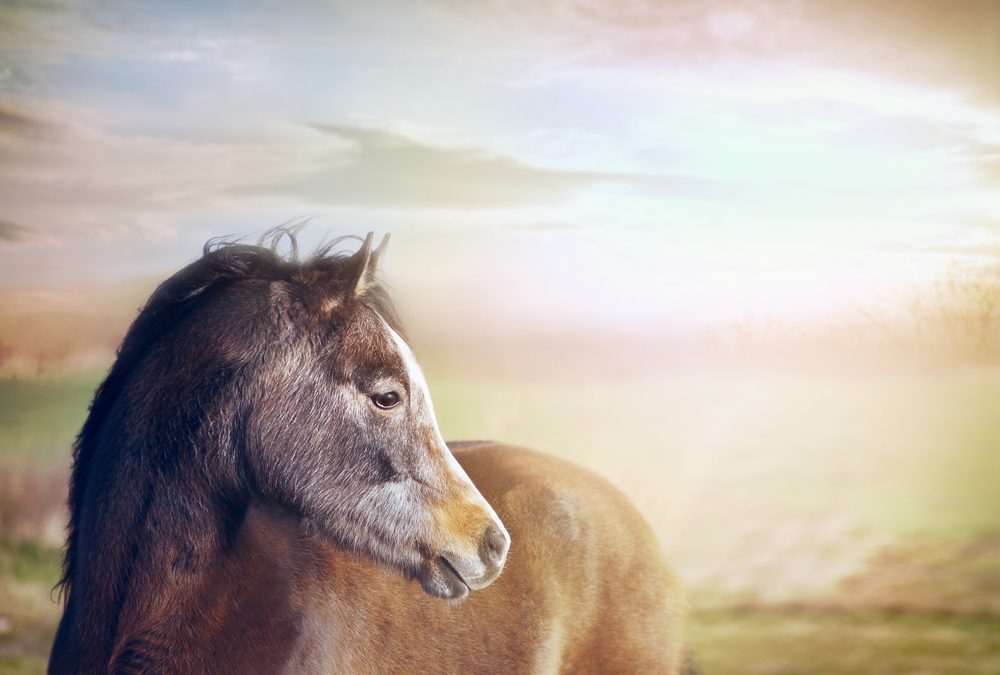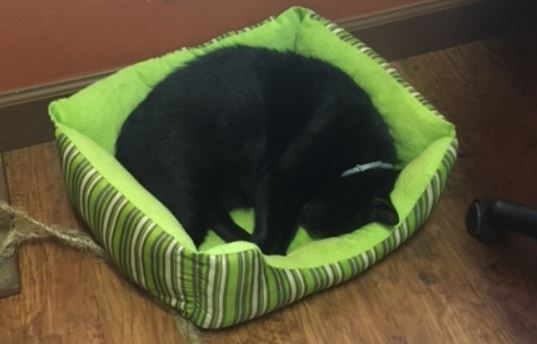
Keeping Super Seniors Super
Tuesdays with Tony
Keeping Super Seniors Super
A very cool thing happened this week: a horse on our Senior Wellness Program was diagnosed with cancer. Whoa, whoa, whoa. Before you get mad at the cat for being insensitive about life (which I am), give a guy a moment to explain why this is cool. This horse’s cancer got found super early, because she is in the Wellness Program. This means my Docs are able to start her on medications early, giving her a significantly better quality of life. And quality of life is the most important thing you can give us critters.
The Bloodwork
On our Senior Wellness Program my Docs pull blood twice yearly. At one of those checks, they are looking for PPID (Cushings), and insulin resistance. PPID really takes a toll on horses. It makes it tough for them to cool off in the summer, and keep warm in the winter. It makes them susceptible to infections. It can cause laminitis. It’s just an awful disease. Luckily there is a treatment, and the earlier the disease is identified, the easier the symptoms are to get under control. Insulin resistance almost always leads to PPID, and is a major cause of laminitis. The good news is insulin resistance can be well-controlled with diet and exercise! At the other bloodwork check, a Complete Blood Count (CBC) and Chemistry panel are pulled. A CBC checks all the types of cells in the blood. The two big categories are red blood cells and white blood cells. Chemistry panels check the function of the major organs like liver and kidneys. I’ll drop some wisdom on you about chemistry panels in a future episode. Today we’ll stick to CBCs.
Oxygen is good
Let’s talk about the red ones first. Red blood cells carry oxygen throughout the body. It is fairly common to find low red blood cell numbers in older horses. When that happens, my Docs start with an evaluation of the diet. Older horses have a harder time getting all those key nutrients from their food, so a high quality diet is very important! If the diet is good, the Docs start looking for evidence of inflammation.
The Fighters
That brings us to the white blood cells. There are three main types of white blood cells: neutrophils, lymphocytes, and eosinophils. There are a few others added in there, but these are the biggies. In a huge oversimplification of things, they work as follows: neutrophils handle bacteria, lymphocytes handle viruses, and eosinophils are in charge of allergies. So if the red blood cell count was low, and there were a lot of neutrophils, my Docs would start looking for an infection. This hunt generally starts with an ultrasound of the abdomen and chest.
Back to the cancer
I know, I know, what about my opener? You thought this blog was going to be about cancer. Finally, I have arrived at the cancer, you inpatient human. This past week my Docs pulled a CBC and Chemistry panel as part of a routine visit for a horse on our Senior Wellness Plan. The blood work came back with a really high lymphocyte number. Since you have been paying attention to this blog, you think, “Ah, virus!” Good job, you have been listening! However, in this case the number was way, way too high to be a virus. Lymphocyte numbers this high mean lymphoma, and in older horses that’s usually in the intestinal tract.
What’s next?
Next up for this horse will be an ultrasound of her abdomen to see how thick her intestines are. The Docs will also ultrasound, and maybe even x-ray her chest to see if there has been any spread. From there, they will work to come up with a treatment plan that will help this lovely horse live the rest of her days as happy as she can possibly be. This means working to reduce inflammation, and keep her eating. How much time are we talking? Probably about 6-8 months. However, those can be some pretty good months!
Senior horses hold a very, very special place at Springhill Equine. My Docs own Super Seniors themselves, and know the joy that comes from keeping them happy and healthy as long as possible. My Docs also know that quality of life is way, way more important than quantity. When issues like this horse’s lymphoma come up, they work very hard to come up with the best right answer for this horse and her owner. I admire that. It makes me feel a tiny bit of remorse at the harsh looks of disapproval I give my humans from time to time. Never fear, since I’m a cat, I get over that feeling quickly.
Before you go over to the Wellness page on my website, scroll down and subscribe to my blog so you don’t miss one. It’s the big purple box below, you can’t miss it.
Looking for more info on Super Senior horses? Make sure you check out Episode 11 of our podcast, Straight from the Horse Doctor’s Mouth. It’s a half hour of amazing discussion about older horses. Even I, a sleepy cat, was awake and riveted through the whole thing.
One last thing: Our 13th Annual Open House is coming up on September 29th. I heard that there will be a LOT of free give aways, to include a ton of hay, and a Grand Prize of getting your picture taken me, the Amazing Tony. That should be the grand prize, anyway. Check out the Event Page for all the details.
Until next week,
Tony

[jetpack_subscription_form title="Subscribe to Whinny's Wisdoms"]
Tuesdays with Tony is the official blog of Tony the Clinic Cat at Springhill Equine Veterinary Clinic in Newberry, Florida. If you liked this blog, please subscribe below, and share it with your friends on social media! For more information, please call us at (352) 472-1620, visit our website at SpringhillEquine.com, or follow us on Facebook!


